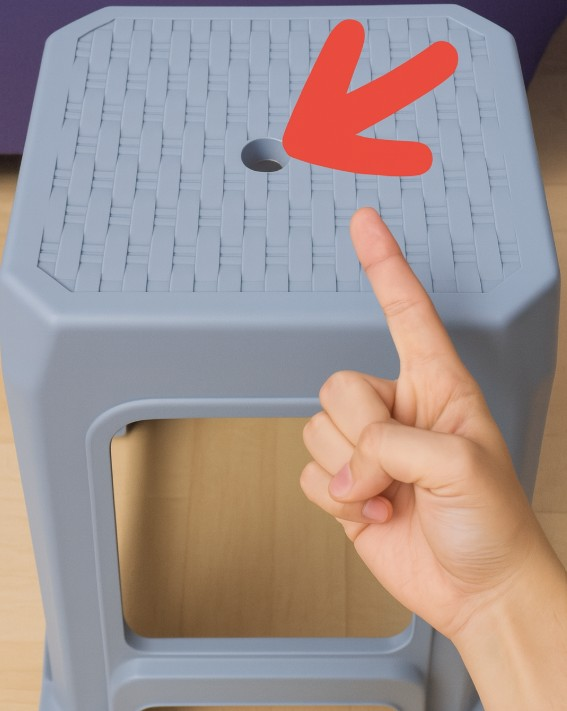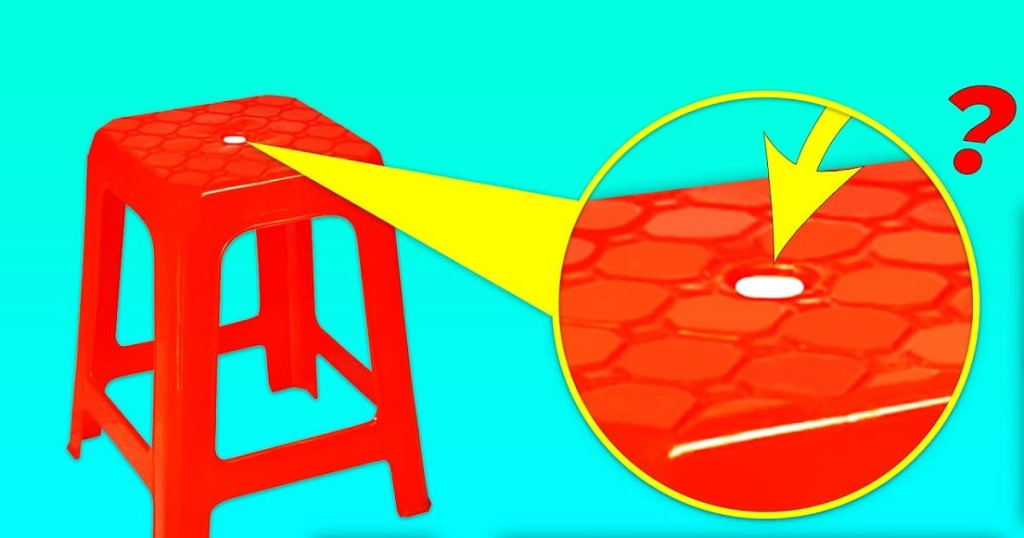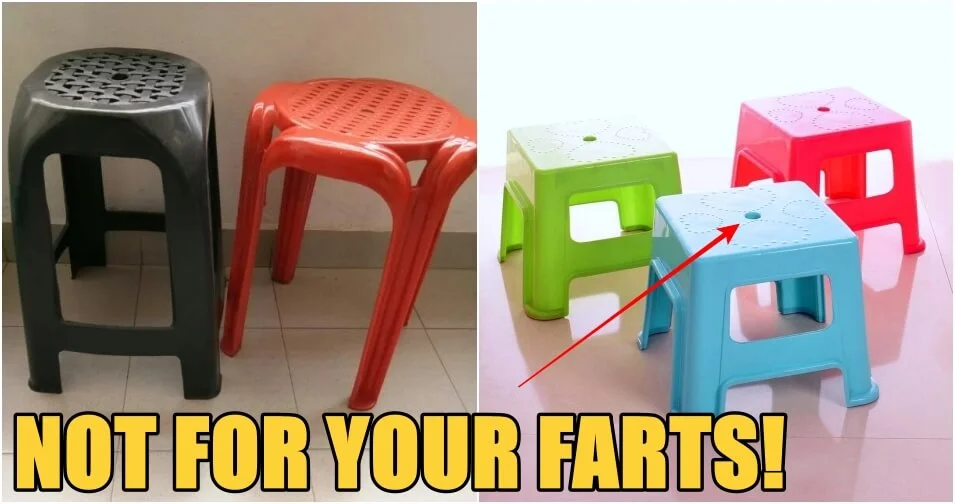We’ve all sat on them. They’re at family gatherings, roadside cafés, school events, and even beachside stalls—those familiar stackable plastic chairs or stools with one unmistakable feature: a round hole right in the middle of the seat. It’s so common we barely think about it. But have you ever asked yourself why it’s there? Is it just a quirky design choice, or does it actually serve a purpose? Spoiler: it’s not random. That little hole is a masterclass in practical, low-cost design.

Solving the Stacking Struggle
If you’ve ever tried to separate a stack of plastic stools, you know the frustration. You pull on one, and the rest cling together like a stubborn puzzle. This happens because smooth plastic surfaces can create a vacuum seal when stacked. That small hole in the center? It allows air to flow in and break the seal, making it easy to lift one stool without toppling the rest. It’s basic physics, cleverly applied. And the benefit goes beyond convenience—it makes these chairs safer to handle and much more efficient to store.
Video: Why Plastic Chairs Have a Hole in the Middle?
A Built-In Handle for Easy Carrying
Ever awkwardly tried to grab a plastic stool by the legs or edges? It’s clumsy and uncomfortable. That center hole doubles as an ergonomic handle. You can slip your fingers through, lift, and carry the stool with minimal effort. Whether you’re setting up for a big event or just moving a few around the yard, that little design detail saves time and energy.
No More Accidental “Puddle Seats”
Rain happens. Spills happen. And without a drainage point, water would collect in the seat, turning it into a mini birdbath. The center hole solves this instantly—water drains away quickly, leaving the chair drier and more comfortable for the next person. This is especially handy for outdoor events or food stalls where chairs are washed regularly. The design prevents puddles, stains, and that dreaded moment when someone unknowingly sits in a pool of water.
A Win for Manufacturing and Efficiency

In plastic injection molding—the process used to make these chairs—the seat’s center is typically the thickest part. Thicker plastic takes longer to cool, slowing down production. By leaving a hole in the middle, manufacturers reduce cooling time, which means faster production and lower costs. Plus, less plastic is used, making each chair lighter and cheaper to ship. Over thousands of units, these savings are huge, and they even help reduce the product’s environmental impact.
Lighter Weight, Lower Impact
Shaving off even a small amount of plastic per chair adds up in mass production. That tiny hole reduces overall weight, making the chairs easier to handle, stack, and transport. It also means fewer raw materials are used, which contributes to a smaller carbon footprint. It’s a small sustainability win wrapped in everyday functionality.
Video: Why Plastic Chairs Have a Hole in the Middle?
A Quirky Detail People Remember
Beyond the practical benefits, the hole has become something of a signature for these chairs. Kids poke their fingers through it, adults absentmindedly trace it, and it’s a little design quirk that sparks conversation. It’s proof that even the most ordinary objects can have personality—and that good design can be both functional and familiar.
The Genius in the Details
The hole in a plastic chair isn’t a flaw—it’s a feature that works on multiple levels: breaking suction when stacking, making the chair easier to carry, draining water, improving production efficiency, and even cutting environmental costs. It’s a reminder that great design often hides in plain sight, quietly making life easier without asking for credit
Conclusion: A Small Circle with a Big Purpose

Next time you sit on a humble plastic stool or chair, take a second to notice that small round hole in the middle. It’s not an afterthought—it’s a thoughtful design choice that blends function, efficiency, and a touch of charm. From physics to manufacturing, portability to comfort, that simple circle is working harder than you ever imagined. Sometimes, the smartest solutions really are the simplest.


